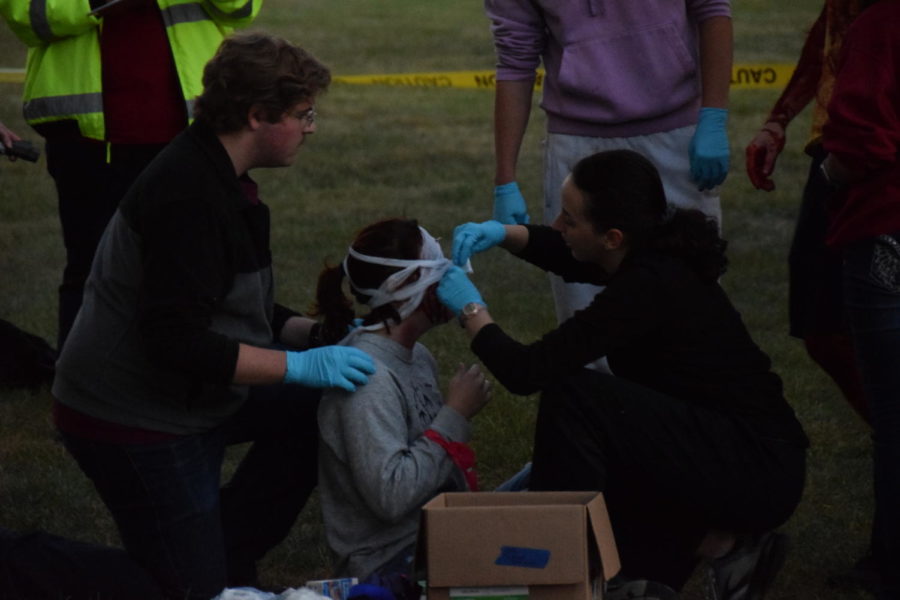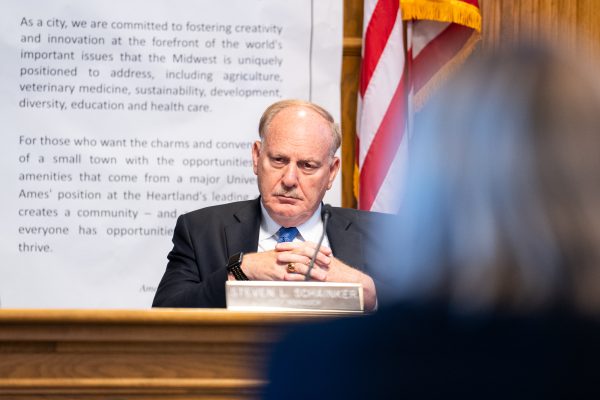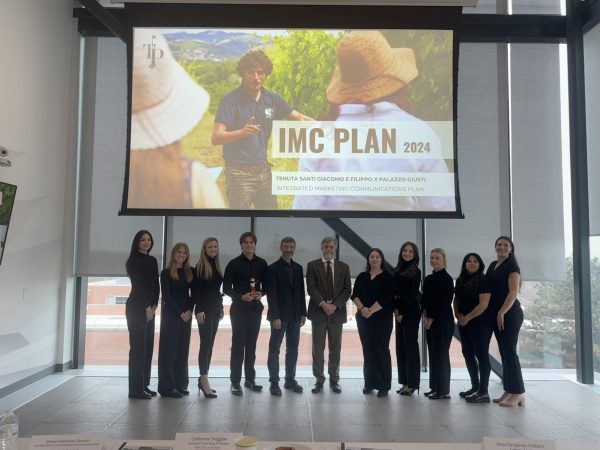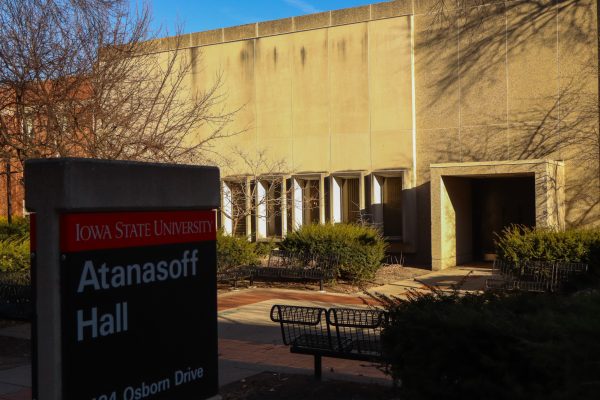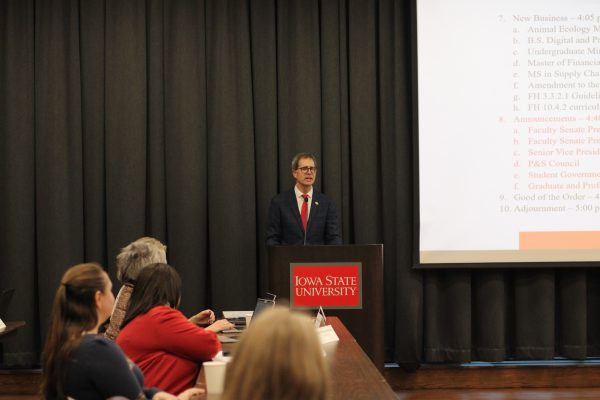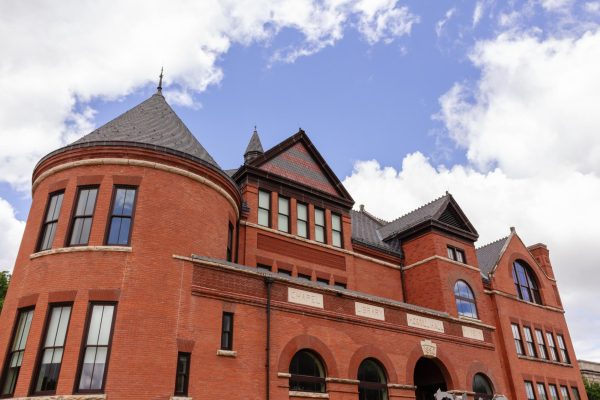Students respond to mock tornado disaster
Joey Aldrich pictured providing medical assistance to a victim of the mock tornado, who was afflicted with shards of glass stuck in her face.
Students sharpened their skills as civilian first responders as a part of their honors class, You Are Your Own First Responder.
In the mock disaster scenario, the Wilson Residence Hall had been struck by an EF4 tornado. The class of 17 honors students was tasked with finding victims of the tornado, providing immediate medical and psychological assistance and preventing as many deaths as possible.
The scenario was complete with various actors in prosthetic make-up made to imitate real-life injuries. Actors’ prosthetic injuries varied from scrapes and bruises to shards of glass stuck in the face and bones piercing their skin. Realism in these injuries helped to immerse the participants in the scenario and imitate a real-life disaster.
Firefighters and first responders were also present to watch over the scenario and provide their expert feedback. Josh Bennett, a lieutenant with the Ames Fire Department, said it was good to see students going the extra mile to prepare for such disasters.
Rather than preparing the class to go out and address disasters as a group, Bennett said the scenario prepares the students to respond to emergencies individually as they encounter them.
“It’s 17 people that are now ready to go out and lead a response on untrained bystanders, and that’s really the benefit of this,” Bennett said.
Bennett said responding to a mock disaster now would decrease the impact when undergoing a real-life emergency.
“It’s training them to be a force multiplier,” Bennett said. “To be a leader in that response someday when a disaster happens and we’re two hours away because we have all kinds of other things to do.”
The participants were split into several groups, a medical team, two field teams and a team of reserves, who were meant to fill in where more help was needed.
The field teams began by checking outside the building and providing support to various mock victims. The participants would assess the severity of the artificial wounds and tag each victim as either green, yellow, red or black, signifying the severity of their condition.

As the field teams tagged each victim, others would remove them from the environment and transport them to the medical area for further treatment. The medical team set up an area where victims could be treated and given the proper medical assistance.
After the field teams cleared the outside of the building, they moved inside, where more mock victims were trapped and screaming for help. Some mock victims were even instructed to act out and cause problems for participants who ultimately needed to control the situation.
Grace Smith, a junior in pre-athletic training, was one of the mock victims of the exercise. Smith spent a good portion of the scenario trapped under a wardrobe within the residence hall before she was rescued.
“I feel like it’s really helpful, especially because we work with emergency situations a lot,” Smith said. “I understand how important it is to be prepared. So, it’s good that they got this opportunity.”
Another mock victim, Phoebe Ditrinco, a junior in animal science, was outside from the beginning of the exercise with no obvious wounds or issues but instead worked to distract the participants by demanding help finding her lost dog.
Luckily for the mock victims (at the expense of the imaginary lost dog), participants managed to avoid getting caught up in a wild goose chase and kept their priorities on saving human lives.
“They did great, the people in the class, they were trained in physical injuries, but I also saw them helping people emotionally get through stuff; one of them was holding their hand and rubbing their back, I was like, ‘That is impressive,’” Ditrinco said. “I did not think they’d be comfortable doing that with people have never met.”
At 7 p.m., the mock disaster ended and the participants, mock victims and instructors retired to the Wallace Wilson Commons to reflect on the scenario over some pizza.
Evan Hilton, a senior in computer science, was the incident commander for the scenario, providing overall leadership for his peers. Hilton said the scenario gave him a real-world reference for disaster scenarios.
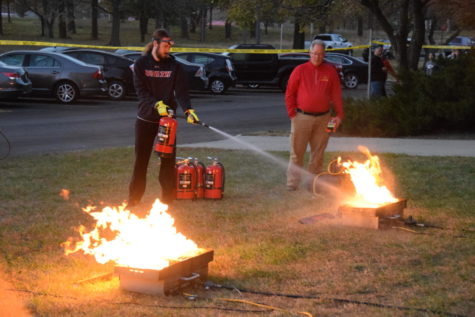
“You never know when you’re going to be in a disaster, and you never know when you need to be prepared, either to be able to help or to realize I need to help myself,” Hilton said. “And so this class has been really important in helping me evaluate, ‘Okay, I can help or I need to help myself.’”
While people can research proper responses to such scenarios on the internet, few experiences can prepare people for the chaos of a true emergency.
“I think even with the issues that this exercise had, I think a lot of them are easily remedied,” Hilton said. “And we knew right away where we had messed up. And that’s the whole point of these exercises. We were told coming in, ‘We’re going to make mistakes.’ It’s better to do them here than in the real world.”
Rachel Frost, a freshman in political science, served as the deputy under the incident commander. Frost said that her experiences in the seminar class have already come in handy while remedying a roommate’s ramen burn.
“I feel like you never know when you’re gonna have a big type of scenario like this happen,” Frost said. “And so being in a position where you’re able to say, I can do something, it’s really meaningful.”
Josephine (Joey) Aldrich, a junior in biology with a pre-med focus, led the medical team, setting up a medical headquarters and providing assistance as field teams brought out mock victims.
“From my perspective, I’d say it went pretty well, as well as it could have with the supplies that we had,” Aldrich said.
With few resources for attending to people’s wounds, Frost said the biggest challenge of the scenario was keeping track of all the responders and patients and how to best help every victim.
“This is what we’re training for, is just regular civilians coming across an incident and being prepared to handle it,” Aldrich said. “I don’t think you can be prepared without it. So, just getting to experience how stressful that would be. And it gives you a new perspective for people that do it for a living.”
You Are Your Own First Responder is an honors seminar aimed at equipping students with the skills necessary to respond well to emergencies. Clayton Oliver, emergency manager for environmental health and safety at Iowa State, was the class’s instructor.
Your donation will support the student journalists of the Iowa State Daily. Your contribution will allow us to purchase equipment, send our student journalists to conferences and off-set their cost of living so they can continue to do best-in-the-nation work at the Iowa State Daily.


